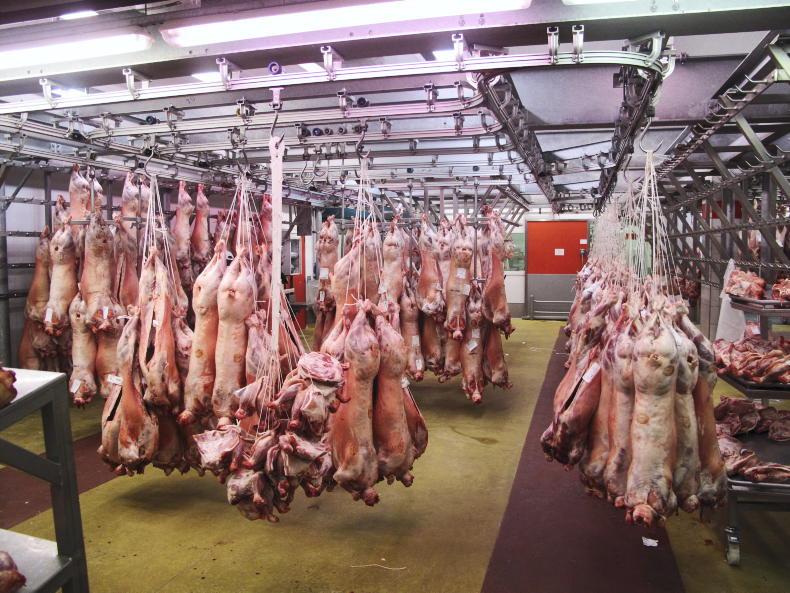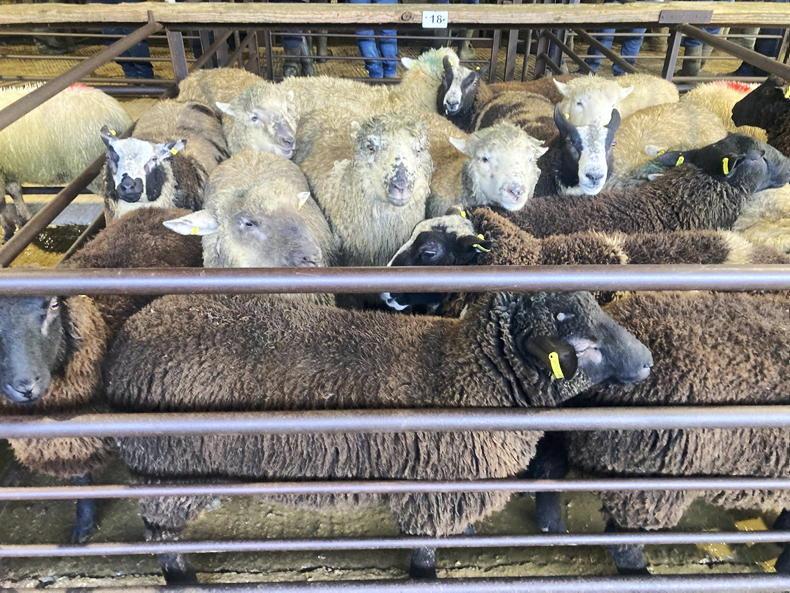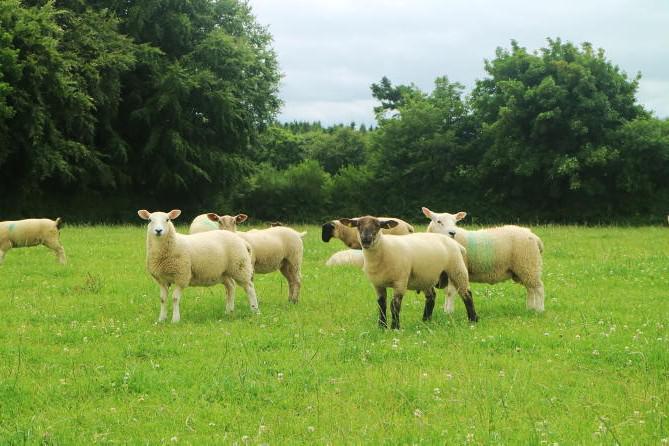One of the most important things to remember when using a wormer is that the product will most likely not kill all the target worms in the animal.
When dosing sheep in the summertime, this means some gutworms will survive the treatment and end up back in the pasture.
The surviving worms are resistant to that product and having too many resistant worms building up in pasture over time means the product will eventually become less effective.
Wormers are also referred to as anthelmintics, and the process outlined above is known as anthelmintic resistance.
Populations of these worms on sheep farms are unavoidable so when using wormers, the aim is not to remove all worms from sheep and pasture.
Instead, we want to use wormers in a strategic way to lower worm burdens and maintain populations of worms that are not resistant to as many different wormer products as possible.
Overuse
Overuse of the same wormer is a common way to select for resistance. This can be an issue in small flocks, where plenty of drench is often leftover after a blanket treatment and is then re-used the next time sheep are due a treatment.
It is important to change to a product with a different active ingredient after each treatment. This should help reduce the number of resistant worms that build up in pasture. When changing product, make sure the new wormer has a different active ingredient, and is not just a product with a different trade name and the same active ingredient as the last wormer.
Product list
Table 1 outlines some common sheep wormers that are available in NI. Each wormer is categorised into one of five colour coded groups depending on its active ingredient.
When switching wormers to avoid resistance, moving to a different group is a sure way to change active ingredient.
Narrow spectrum products should be used as much as possible as resistance can build up if broad spectrum products are used unnecessarily.
There are little or no resistance issues with group four (orange) and group five (purple) wormers, so they can play a key role in avoiding the build-up of worms that are resistant to products in groups one, two or three.
Startect remains unavailable in NI, so Zolvix is the product to use to clear out resistant worms. It can be used on lambs in the late summer or early autumn to wipe out any resistant worms that have built up over the season.
It is recommended to also use Zolvix as a quarantine treatment on bought-in stock to ensure that they are not bringing resistant worms on to the farm.
Dung samples correct dosing technique
Routinely taking dung samples from lambs for faecal egg counts (FEC) gives you confidence that you are treating lambs at the right time with the right product.
It allows for early identification of high worm burdens which may be impacting daily weight gains but are yet to cause visible signs of scour in lambs.
Likewise, if a FEC shows that lambs do not need treatment, then you have saved money on an unnecessary treatment and are not selecting for anthelmintic resistance.
Getting dung samples analysed also lets you see if there are other parasites present which may require a specific type of wormer, such as coccidia.
Dung collection
Collecting dung samples requires less effort than many people think and can be done when sheep are being routinely checked in the field.
When a lamb gets up from laying, wait for it to stretch and dung, then move over and lift the fresh dung. Between 3-5g of dung, roughly equivalent to a teaspoon, should be taken from each lamb.
Around 10 to 15 lambs should be used for each pooled dung sample to make it representative of the group.
Other methods to collect fresh dung samples include holding sheep in the corner of a field with a dog, or after lambs have passed through a clean yard or laneway.
Do not give dung samples to a vet who sends it away to a separate laboratory for analysis as the turnaround time for results is usually too slow.
Instead, give samples to a vet who checks FEC themselves and can give results and advice on treatment within 24 hours.
If a treatment is required, a follow-up FEC can be carried out to check that the wormer has worked and there are no resistance issues.
Wait seven days after using group two (yellow) wormers, and 14 days for all other wormers, before collecting samples for a post treatment FEC.
Correct dosing
Under-dosing sheep with a wormer is another way of selecting for resistance, so it is essential that the correct amount of product is used. The advice is to always set the dosing gun for the heaviest lamb in the group. A few of the biggest lambs should be weighed beforehand to make sure weights are not being under-estimated.
Check that the dosing gun is accurate before use by discharging a single dose into a measuring cylinder or a large syringe with the plunger removed.
The dosing equipment should be regularly inspected for kinks or worn seals and it should be cleaned with warm soapy water after use.
Make sure sheep are properly restrained when drenching so that they swallow the proper amount of wormer.
Place a hand under the sheep’s head and tilt it slightly to the side, then insert the gun into the side of the mouth and place the end of it over the tongue.
If the wormer product is administered by injection, use clean and sharp needles and check the calibration of the gun by testing a single dose into a smaller syringe or measuring cylinder.
Wormers should be stored away from direct sunlight and expiry dates on the packaging should be checked before use.
When a wormer is opened, it should be used within the timeframe shown on the packaging.
Other worm control factors
Aside from the use of wormers, there are other considerations to keep in mind for controlling internal parasites in sheep.
Grassland which is continuously grazed with sheep will have large worm populations. Breaking up the grazing rotation by cutting silage or grazing cattle in a field will help lower worm burdens as it will be a longer period before sheep are back grazing it.Similarly, taking land out of grass altogether, by planting cereals or fodder crops, will reduce worm populations. Certain plants that are often included in multi-species sward mixes, such as chicory, have anthelmintic properties which reduce worm burdens in sheep.Not all lambs with high worm burdens need to be treated with wormers though. Some lambs with high faecal egg counts will not scour and continue to thrive. Technology is available to track liveweight gain in individual lambs and give an assessment if each lamb needs a wormer treatment based on its individual weight gain. An example of this is the Cotter Crate sheep handling system made by Limerick based firm Cotter Agritech.
One of the most important things to remember when using a wormer is that the product will most likely not kill all the target worms in the animal.
When dosing sheep in the summertime, this means some gutworms will survive the treatment and end up back in the pasture.
The surviving worms are resistant to that product and having too many resistant worms building up in pasture over time means the product will eventually become less effective.
Wormers are also referred to as anthelmintics, and the process outlined above is known as anthelmintic resistance.
Populations of these worms on sheep farms are unavoidable so when using wormers, the aim is not to remove all worms from sheep and pasture.
Instead, we want to use wormers in a strategic way to lower worm burdens and maintain populations of worms that are not resistant to as many different wormer products as possible.
Overuse
Overuse of the same wormer is a common way to select for resistance. This can be an issue in small flocks, where plenty of drench is often leftover after a blanket treatment and is then re-used the next time sheep are due a treatment.
It is important to change to a product with a different active ingredient after each treatment. This should help reduce the number of resistant worms that build up in pasture. When changing product, make sure the new wormer has a different active ingredient, and is not just a product with a different trade name and the same active ingredient as the last wormer.
Product list
Table 1 outlines some common sheep wormers that are available in NI. Each wormer is categorised into one of five colour coded groups depending on its active ingredient.
When switching wormers to avoid resistance, moving to a different group is a sure way to change active ingredient.
Narrow spectrum products should be used as much as possible as resistance can build up if broad spectrum products are used unnecessarily.
There are little or no resistance issues with group four (orange) and group five (purple) wormers, so they can play a key role in avoiding the build-up of worms that are resistant to products in groups one, two or three.
Startect remains unavailable in NI, so Zolvix is the product to use to clear out resistant worms. It can be used on lambs in the late summer or early autumn to wipe out any resistant worms that have built up over the season.
It is recommended to also use Zolvix as a quarantine treatment on bought-in stock to ensure that they are not bringing resistant worms on to the farm.
Dung samples correct dosing technique
Routinely taking dung samples from lambs for faecal egg counts (FEC) gives you confidence that you are treating lambs at the right time with the right product.
It allows for early identification of high worm burdens which may be impacting daily weight gains but are yet to cause visible signs of scour in lambs.
Likewise, if a FEC shows that lambs do not need treatment, then you have saved money on an unnecessary treatment and are not selecting for anthelmintic resistance.
Getting dung samples analysed also lets you see if there are other parasites present which may require a specific type of wormer, such as coccidia.
Dung collection
Collecting dung samples requires less effort than many people think and can be done when sheep are being routinely checked in the field.
When a lamb gets up from laying, wait for it to stretch and dung, then move over and lift the fresh dung. Between 3-5g of dung, roughly equivalent to a teaspoon, should be taken from each lamb.
Around 10 to 15 lambs should be used for each pooled dung sample to make it representative of the group.
Other methods to collect fresh dung samples include holding sheep in the corner of a field with a dog, or after lambs have passed through a clean yard or laneway.
Do not give dung samples to a vet who sends it away to a separate laboratory for analysis as the turnaround time for results is usually too slow.
Instead, give samples to a vet who checks FEC themselves and can give results and advice on treatment within 24 hours.
If a treatment is required, a follow-up FEC can be carried out to check that the wormer has worked and there are no resistance issues.
Wait seven days after using group two (yellow) wormers, and 14 days for all other wormers, before collecting samples for a post treatment FEC.
Correct dosing
Under-dosing sheep with a wormer is another way of selecting for resistance, so it is essential that the correct amount of product is used. The advice is to always set the dosing gun for the heaviest lamb in the group. A few of the biggest lambs should be weighed beforehand to make sure weights are not being under-estimated.
Check that the dosing gun is accurate before use by discharging a single dose into a measuring cylinder or a large syringe with the plunger removed.
The dosing equipment should be regularly inspected for kinks or worn seals and it should be cleaned with warm soapy water after use.
Make sure sheep are properly restrained when drenching so that they swallow the proper amount of wormer.
Place a hand under the sheep’s head and tilt it slightly to the side, then insert the gun into the side of the mouth and place the end of it over the tongue.
If the wormer product is administered by injection, use clean and sharp needles and check the calibration of the gun by testing a single dose into a smaller syringe or measuring cylinder.
Wormers should be stored away from direct sunlight and expiry dates on the packaging should be checked before use.
When a wormer is opened, it should be used within the timeframe shown on the packaging.
Other worm control factors
Aside from the use of wormers, there are other considerations to keep in mind for controlling internal parasites in sheep.
Grassland which is continuously grazed with sheep will have large worm populations. Breaking up the grazing rotation by cutting silage or grazing cattle in a field will help lower worm burdens as it will be a longer period before sheep are back grazing it.Similarly, taking land out of grass altogether, by planting cereals or fodder crops, will reduce worm populations. Certain plants that are often included in multi-species sward mixes, such as chicory, have anthelmintic properties which reduce worm burdens in sheep.Not all lambs with high worm burdens need to be treated with wormers though. Some lambs with high faecal egg counts will not scour and continue to thrive. Technology is available to track liveweight gain in individual lambs and give an assessment if each lamb needs a wormer treatment based on its individual weight gain. An example of this is the Cotter Crate sheep handling system made by Limerick based firm Cotter Agritech.












SHARING OPTIONS